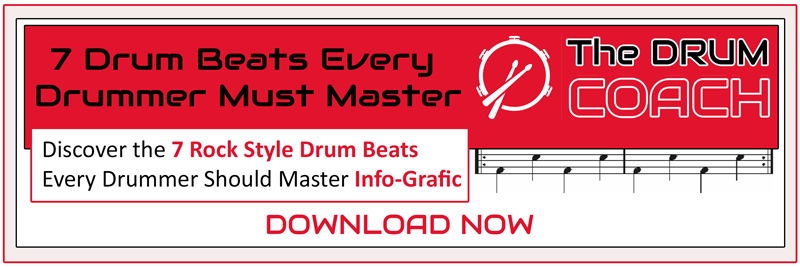![]()
Drumming as exercise is a great way to relieve stress, but did you know that it can also be a great workout? According to a recent study, drumming can help you burn up to 300 calories in just 30 minutes. That’s the same as running at a 6-minute mile pace!
You might not think of drumming as a form of exercise, but it actually is! Drumming is a great way to get your heart rate up and burn some calories. But there is a vitally important aspect of drumming and health that we will cover in this article.
If you’re looking for a new way to exercise and burn some calories off. Here are some starter tips that may be of help in getting a great workout.
The Benefits of Drumming as Exercise
Not only is drumming a great workout, but it also has a number of other benefits. For one, it’s a great way to improve your coordination and dexterity. It also helps to improve your sense of rhythm and timing. And because drumming is such an active form of music-making, it can also help burn some calories. All of which will help to improve your memory and concentration.
So consider joining a band or forming your own group. Playing in a band is not only good exercise, but it’s also good for your mental health.
How to Use Drumming to Exercise
-
Get a Drum Kit
This goes without saying but if you don’t already have a drum kit, you’ll need to get one. Before you can start using drumming as a form of exercise. You don’t need anything fancy – a basic set will do just fine. Once you have your drums set up, you’re ready to start working out!
But of course, you will need to learn how to play the drums before you can actually use your drumming as a workout. The Drum coach website offers a range of articles to get you started learning to play drums. You will find articles on drum rudiments and playing a basic drum beat on this site. As well as other areas of drumming to explore through this website. But these two articles will help you to get started learning how to play the drums.
-
Warm Up
Before you start playing your drums, it’s important to warm up. This will help prevent injuries to ligaments, tendons, limbs, and joints. And especially the wrists and knees. And it will help you get the most out of your workout. Start with some basic stretches and then move on to some simple drum beats. Once you’re warmed up, you’re ready to rock!
-
Play Some Music
Now that you’re all warmed up, it’s time to start playing some music! Pick your favorite songs and play along. Remember to keep your heart rate up by playing fast-paced songs. And take short breaks between songs. If you want, you can even create your own workout playlist specifically for drumming.
But be mindful to not become too tense. Relax, and let the lymph flow. More on that later.
-
Cool Down
After you’ve finished playing your songs, it’s important to cool down so your muscles don’t get too sore. Do some more stretches and then sit down at your drums and play some relaxing beats. This will help your body recover and prepare for your next workout.
Drumming Isn’t A Muscle Building Exercise
Having mentioned these start-off tips. You should understand that drumming doesn’t build muscle. Although it does burn off fat and calories. Much like most forms f movement. If you are strictly looking to build muscle then drumming is probably not the route forward. As there is no real resistance or heavy lifting to do in drumming.
However, drumming offers something to your overall health and fitness program. Something that needs to be mentioned.
The Lymphatic System – What Drummers Need to Know
The lymphatic system is a network of tissues and organs that help the body get rid of waste and fight infection. It’s made up of a bunch of different parts. Including bone marrow, the lymph nodes, spleen, thymus, spleen, and tonsils, all forming part of the body’s essential immune system components. The lymphatic system doesn’t have a pump like the circulatory system does (the heart). So it relies on things like deep breathing and muscle movement to keep the lymph flowing.
 This is important for drummers to know because of the physical nature of the instrument. We are constantly moving our arms, legs, and upper body, which helps keep the lymph moving. In addition, deep breathing is essential for good drumming techniques. By making sure we are taking deep breaths, we are helping keep the lymph moving as well. I believe that some other form of movement exercise should be a part of aver healthy drummer’s regime. Such as walking or cycling. An hour of drumming and 3o minutes of walking or cycling will do any physical body the world of good. You could add swimming to your fitness regime too.
This is important for drummers to know because of the physical nature of the instrument. We are constantly moving our arms, legs, and upper body, which helps keep the lymph moving. In addition, deep breathing is essential for good drumming techniques. By making sure we are taking deep breaths, we are helping keep the lymph moving as well. I believe that some other form of movement exercise should be a part of aver healthy drummer’s regime. Such as walking or cycling. An hour of drumming and 3o minutes of walking or cycling will do any physical body the world of good. You could add swimming to your fitness regime too.
These forms of exercise get the lymph fluid moving that then keeps the body clean of toxins. Now, let’s have a deeper look at each part of the lymphatic system.
The Lymph Nodes
The lymph nodes are small bean-shaped structures. They are found throughout the lymphatic system. Behind the knees, in the neck, in the chest, under the arms, groin, and other places. They filter out bacteria and other harmful substances from the lymph fluid. As the fluid is moved through the system and passes through them. The lymph nodes also produce white blood cells, which help fight infection. You may have experienced swollen or tender lymph nodes at some point in your life. Usually when you’re fighting off a cold or other viral infection.
The Thymus
The thymus is a small organ located in the chest behind the breastbone. It produces white blood cells called T-cells, which help fight off infection. The thymus gets smaller as we age, which is why older people are more likely to get infections.
The Spleen
The spleen is a large organ located on the left side of the abdomen near the stomach. It produces white blood cells. And removes old or damaged red blood cells from circulation. The spleen also stores reserve supplies of blood. That can be released into circulation if necessary.
Tonsils
Tonsils are two small glands located in the back of the throat near where the roof of the mouth meets the throat. They produce antibodies that help fight off infection. Tonsils can become infected and swollen – this condition is called tonsillitis.
Bone Marrow
Bone marrow is a soft tissue found inside bones. Bone marrow produces red blood cells, white blood cells, and platelets. (cells that help with clotting). Oxygen is transported to every corner of the body by red blood cells, ensuring vital oxygenation to all bodily tissues. White blood cells fight infection, and platelets help with clotting if you have a cut or scrape.
Lymphocytes
Lymphocytes are a type of white blood cell produced by the body’s immune system. It does this in response to infection or illness. There are two main types of lymphocytes: B-cells and T-cells. B-cells produce antibodies that destroy bacteria and other harmful substances in the body. T-cells attack infected cells directly or release chemicals that kill them outright.
Some Final Thoughts On Drumming As Exercise
The lymphatic system is crucial for our overall health. And as drummers, we need to do our part to keep it running smoothly. By staying physically active and taking deep breaths regularly. We can keep our lymph fluid moving and help prevent stagnation and illness. In addition, it’s important to be aware of the different parts of the lymphatic system. So that we can better understand how it works and why it’s necessary for our health.
Hit: Regular massage never hurts too. It’s clear that drumming and other movement exercises are good for our health and fitness. I have always worked hard as a gigging drummer in the bands I worked with. And I have always been an active individual.
Because of this, I have burned fat off almost effortlessly. Well, put it this way, fat was never an issue as I was always lean. I also visited the gym a few times per week, cycled, and went swimming whenever possible. So drumming can definitely help maintain good health. Mainly through helping the lymph fluid circulate and eliminate toxins.
And so drumming shouldn’t be ignored as a form of movement exercise.
Conclusion:
Drumming is not only good for our health! It’s also fun, it’s energizing, and it’s a great maintenance workout for your whole body. If you’re looking for a new way to stay fit, give drumming a try. And don’t forget to warm up before you play and cool down afterward. This will help prevent injuries and help you get the most out of your workout.
Drumming helps burn calories, improves coordination and dexterity, and even sharpens your mind. Drumming sharpens the mind. It does this through methods such as using correct posture and the Alexander Technique. And best of all, it’s something you can do with friends!
Do you have any fitness tips for drummers? What are your health experiences where drumming is concerned? Let us know in the comments below and let’s get fitter together!
Thanks for listening
The Drum Coach




